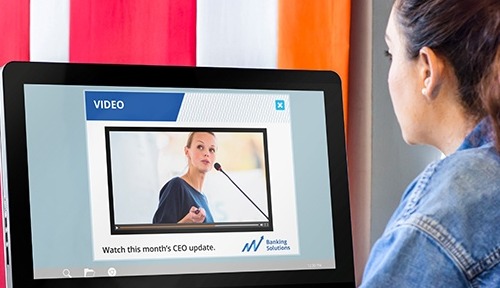
Successfully working from home requires a major mindset shift for employees.
It’s a mode of work entirely different from what most are used to. And that unfamiliarity can create an uncertainty that inhibits productivity.
Periods of organizational change, especially if poorly managed, cause higher employee stress, sustained productivity plunges and reduced quality of work.
In the coming weeks and months of business disruption due to the coronavirus, managers need to keep employees focused, motivated and productive.
Failing to do so will see performance suffer and the business take a dangerous nosedive.
Maintaining focus benefits employees too. Thriving and achieving while working from home helps staff retain a valuable sense of normalcy. It also provides a purpose to take their mind off their isolation and loss of social interactions.
Here are eight things you can do today to improve employee productivity and deliver value that drives your business goals – however rocky the road ahead may be.
1. Reminders of values and objectives
Before the pandemic struck, your business plan included a range of objectives to steer a course for business success. While the goalposts may have shifted as a result of global events since then, staying focused on your strategy and achieving objectives remains critical. As the Harvard Business Review make clear, without maintaining a clear and compelling strategy, your business will fail.
Employees need reminders of your key business values (the elements of your DNA which define benefits to staff and customers) and strategic objectives. Yet remote employees cannot be reminded of these through regular channels such as digital signage screens in lunchrooms or communal areas.
Make use of employee computers instead. Think of their screens as digital billboards through which you can reinforce your values and objectives via custom lock screen messages. Repetition is where tools like this excel, when staff are exposed to messages multiple times throughout each day.
2. Weekly all-staff communication
Disconnection with colleagues and the wider business is a common reaction to working remotely, particularly if enforced suddenly. The traditional modes of communication employees rely on, both formal (all-hand or town hall meetings) and informal (water cooler discussions), are removed.
Introduce a concise overview of the company position and outlook, plus summaries of key projects and outputs for each department. Hold these events live or distribute a pre-recorded version through a video alert to all staff.
Start weekly and either increase or decrease the regularity depending on need. This helps employees see the bigger picture and how they’re contributing to this, and expands their perspective beyond just their immediate team.
At SnapComms, CEO Chris Leonard summarized the approach as, “We will provide daily communications as applicable when key updates or changes occur. The frequency of team video conferences at regular times through the day will be essential, focusing on key priorities with a bias for action. Social interaction, albeit virtual, is absolutely critical and we will be weaving this into all that we do.”

3. Connecting and engaging
A diverse remote workforce is harder to remain connected and engaged with. This is especially true if your business operates a BYOD model, where employees could be working from a range of different devices. Reaching every employee with essential messaging at the exact time needed is complicated.
A mobile-only approach is highly likely to fail. By communicating with staff solely via their mobile phone you’ll neglect 20% to 30% of your workforce, according to research by the Journal of Homeland Security and Emergency Management. Consider the number of employees who have their phones on silent, or are inaccessible or in bad coverage areas.
To achieve the level of speed and reach that's necessary to connect and engage with your staff, you need a communications platform for both mobile and desktop devices. A single platform which delivers cross-device messaging increases efficiency and minimizes effort – as well as ensuring no-one is left in a ‘communication black hole’.
4. Focus effort on the things that matter
All too often being busy isn’t productive. Staff are just busy being busy, completing small tasks related to their roles but which don’t deliver significant business value. Being productive in the workplace can be harder when working from home. Managers need to address this in order to transform their employees into high performing teams.
Management communications must guide staff to prioritize those activities that directly and positively impact the business now. Minimize distraction by removing non-essential tasks to the team ‘parking lot’, freeing up time and effort to attend to important activities and ensuring staff don’t ‘sweat the small stuff’.
Productivity experts recommend the “power of three” – a list of three must-do items which each staff member focuses on for that day, to the exclusion of other non-essential work. This is proven to help employees stay centered and accomplish more, and is a worthwhile technique to introduce.

5. Provide encouragement
Employees need positivity in times of disruption and change. Feeling a sense of achievement bolsters confidence and mental wellbeing. It’s especially true in today’s world of dispersed teams and remote workers. Recognizing individual and team achievements and celebrating project milestones are powerful psychological motivators for staff.
However, the informal moments of praise and acknowledgement employees are accustomed to in the office are nearly impossible to replicate online. The answer is to replicate these informal recognitions in the more formal environment of digital channels – outside traditional performance review processes.
An employee app is a useful tool for this. Its dynamic format and social-style interactivity deliver snackable messages that staff can readily consume and engage with. It also provides valuable reassurance to staff during the uncertainty of today.
6. Break projects into smaller deliverables
It’s common for employees to feel overwhelmed by large projects, especially if ultimate completion is months (or years) into the future. The absence of the sense of accomplishment which comes at a successful conclusion can also be disheartening.
Try adopting some of the principles of the sprint model widely used by software development teams. Breaking projects down into smaller deliverables makes them feel more manageable, and provides valuable check-in times to monitor progress. It also allows employees to receive regular the jolts of accomplishment integral to maintaining focus.
Setting more discrete, time-bound deliverables are important in the absence of the open accessibility of support and face-to-face discussions staff are accustomed to in the office.

7. Maintain managerial oversight
Now isn’t the time for managers to be lessening contact with their teams. Many employees will find the adjustment to remote working a challenge and may find themselves lacking direction or motivation. Left unchecked, this can fester into a sustained period of low productivity.
Managers should be holding regular progress catch-ups with their whole teams. They can then summarize current tasks, manage day to day resourcing, assign priorities and provide support to those who need it. These catch-ups tend to be most effective when held at both the beginning and end of each week.
Integrate your task management and collaboration software for a holistic view of what everyone’s working on and to enable easy discussion. Options abound for these types of software, but Asana or Monday.com (task management) and Teams or Slack (collaboration) are well-known.
8. Strengthen focus on customers
As well as being a crucial revenue stream, customers are a valuable source of information and promotion in these disrupted times. While being sensitive to others’ circumstances, customer-facing staff should be directed to improve their level of connection with customers.
Provide advice, tools or information of value to customers that they can access free. Reach out to them via social channels to understand how they’re coping. This fosters a dialogue which benefits your business in several ways.
It provides important information on the state of the customers’ business, which may affect yours in terms of orders or payments. It strengthens relationships during adverse times, which can evolve into brand advocacy. It also encourages satisfied customers to promote positive messages about your brand online at a time when traditional external messaging won’t cut through.
The ripples from the coronavirus may have turned the world on its head, but efficient businesses can still improve productivity to achieve business results, even in changing times.
Maintaining focus and productivity is the key to harnessing the power of your workforce to ensure your business is one of them.



